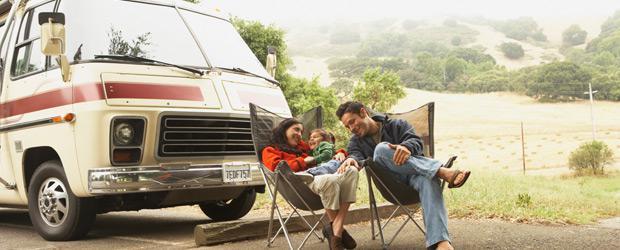
Skip the airport: 7 tips for first-time RV drivers

Are you looking for a new kind of summer adventure that doesn’t involve crowded airports and security checks? Then, you might be ready to climb behind the wheel of a recreational vehicle.
RVs are more popular than ever. More than 11 million U.S. households own one, according to the RV Industry Association.
But buying one is a big investment.
Before you take that step, consider renting an RV for a summer trip — at least to get a sense of whether the RV lifestyle suits you. It’s also a good way to acquaint yourself firsthand with RV driving challenges.
With the latter in mind, here are some safety and logistical tips to consider for your first time RV rental:
1. Practice parking and turning
Shortly after choosing the right RV, get acclimated to your new “big ride” in a safe, open space. Even if you’ve driven a minivan or large truck for years, you’ll find that the RV rental experience presents an assortment of new challenges. “Go to a mall when it’s empty or a big church lot on a weekday,” says RV expert Janet Groene, co-author of the book, Living Aboard Your RV. “At low speeds there, learn to use the mirrors, turn corners, back up and park. Familiarize yourself with the rear-facing TV view, if your RV has one. If you’re traveling with a partner, practice hand signals so you can help each other park and back up without resorting to shouting instructions.”
2. Initial inspection
Before heading out, do a walk-around of the RV to observe any potential problems. “Check your tire pressure,” says Groene. “Make sure all access doors are closed and no obstructions are in the way.”
3. Be aware of potential RV sway
You have one major safety advantage in an RV: elevation. You’re sitting higher than most auto drivers, which gives you a longer, wider view of the road. Use this to gain a greater perspective of what’s ahead, including any road obstructions, slowing traffic, accidents, etc. “You should give your full attention to the road, especially in an RV,” Groene says. “It has a higher center of gravity and lots of wind surface. Maneuvering provides many surprises and they are worse at speed or on windy days. Add a sudden blow-out to the picture and you’ll want both hands on the wheel.” If you’re towing an RV trailer use these tips to prevent RV trailer sway.
4. Increase your following distance
About 15 percent of RV auto insurance claims are caused by the failure to correctly stop and turn. RVs need plenty of distance to brake, as well as width to turn.
5. Check for low clearance signs
Always check clearance signs for tunnels and commercial buildings to assess whether your RV will fit underneath. “You should be constantly aware of your RV’s height in feet and inches,” Groene says. “Don’t attempt to go through a drive-thru or indoor parking garage unless you’re absolutely certain you’ll make it.”
6. Balance load
An unbalanced RV is likelier to suffer a blowout, breakdown or braking/steering problems. Pack evenly so you don’t “overload” one particular section of the RV.
7. Research campgrounds in advance
In planning a long trip in the open country, go on the websites of RV campgrounds to make sure they’re right for your RV. “Many indicate whether they have pull-through sites and hook-up areas,” Groene says. “Pull-throughs allow you to drive straight to the RV section. Hook-ups are for connecting to electricity, water and sewer.” Check out these RV camping tips.
And, of course, make sure you have the right insurance to cover you while you’re on your new adventure. Call Flesher and Associates at 515-274-5500.
Tags: auto insurance, RV insurance
